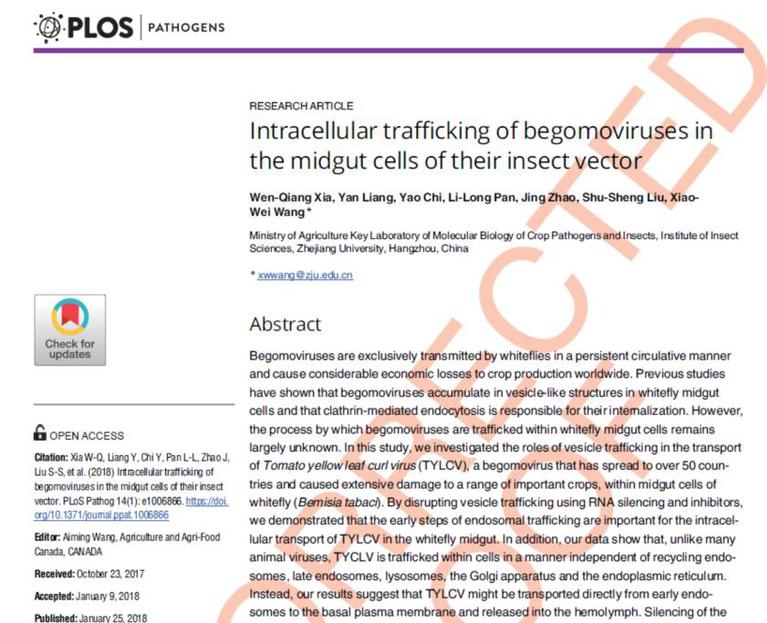The research group of Prof. Wang Xiaowei in the Institute of Insect Sciences, Zhejiang University published an article entitled “Intracellular trafficking of begomoviruses in the midgut cells of their insect vector” in PLos Pathogens (http://www.plospathogens.org/article/info:doi/10.1371/journal.ppat.1006827).
Because plants are sessile, plant-infected viruses must have an efficient means to move from one plant host to another. Many described plant viruses are transmitted by insects in a persistent circulative manner, in which the viruses need to travel from the gut lumen into the hemolymph, move to the salivary gland, and finally be secreted from the salivary gland into new host plants.
In this study, Prof. Wang’ group found that begomovirus can take advantages of endocytosis, exocytosis and membranous vesicle in epithelial cells of whitefly midgut to help itself be transported into hemolymph. Tomato yellow leaf curl virus (TYLCV) firstly enter midgut cells by hijacking the clathrin-mediated endocytosis pathway, and form small membranous endocytic vesicles in midgut cells. Then viral particles are transported to early endosomes depending on the fusion between virus-containing endocytic vesicles and early endosomes, which is mediated by Rab5 and the CORVET complex. The results showed that the early endosome and tubular endosomal network are important for virus transmission; however, recycling endosomes, late endosomes, lysosomes, the Golgi apparatus and the endoplasmic reticulum are not. It suggest that TYLCV might be transported directly from early endosomes to the basal plasma membrane and released into the hemolymph. This study provides new insights into the transmission mechanisms of TYLCV and gives valuable clues to the design of new strategies to block begomovirus transmission.
This research was supported by the National Natural Science Foundation of China and the National Basic Research Program of China. Dr. Wen-Qiang Xia is the first author of this study, and Yan Liang, Yao Chi, Li-Long Pan, Jing Zhao, and Prof. Shu-Sheng Liu are coauthors.
